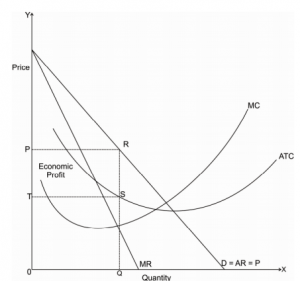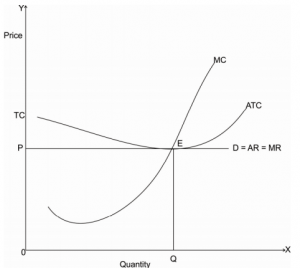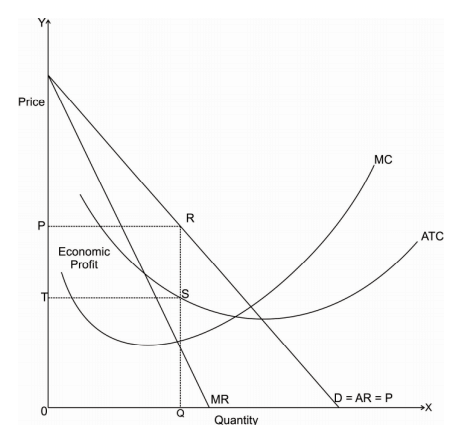Profit Maximisation Under Perfect Competition: Business Economics 2021
Profit Maximisation Under Perfect Competition
Profit is the main objective of any firm in business. Each and every firm tries to make the maximum possible profit in the business. The firm earns a profit when the Total Revenue(TR) which has earned subtracted from the Total Cost(TC).
π = TR – TC
Where π= Profit, TR = Total Revenue, TC = Total Cost.
Total revenue (TR) is the total revenue firm earned after the sale of its product. Symbolically, TR = P × Q
TR is Total Revenue, P = Price per unit, Q = Quantity per unit sold.
Total Cost (TC) is the total cost that a firm spends to produce the product.
TC = Q ×A
Average revenue (AR) is the revenue generated by selling per unit of output.
AR=TR/Q
AR is the Average Revenue. Hence if, P × Q = TR/Q = AR
Therefore, we can say that,
P = AR
Therefore, we say that the price under perfect competition is equal to the average revenue which a firm earns in a market.
A firm in a perfectly competitive market tries to maximize its profits. It is possible for a firm can earn profits that can be positive, negative, or zero in the short run. In the long-run economic profits which the firm earns will be zero.
The marginal revenue (MR) is the change in total revenue from an additional unit of output sold in the market for the firm that bears Marginal cost.
MR=∆TR/∆Q
Marginal Cost (MC) is the additional cost that a firm spends to produce the additional unit of output.
MC=∆TC/∆Q
To maximize the profits in a perfectly competitive market, the firms set the price where the marginal revenue equals marginal cost (MR=MC).
The MR curve is the slope of the revenue curve, which is also equal to the demand curve (DD), price (P), and the Marginal and Average Revenue curve.
Therefore, In the short term, a firm can earn economic profits to be positive, zero, or negative. When the price is greater than the average total cost, the firm is making a profit. When the price is less than the average total cost, the firm is making a loss in the market.

Perfect Competition in the Short Run, it is possible for an individual firm to make an economic profit. This state is shown in the above diagram, as the price or average revenue, denoted by P, is above the average cost denoted by AR.
When the price is less than the average total cost of the production, at that time the firms are making a loss.
In the long run, if firms in a perfectly competitive market are earning negative economic profits, then more firms will leave the market and which in turn will shift the supply curve left of the diagram.
As the supply curve shifts to the left, the price will rise. As the price rises, the economic profits will increase until they become zero.

Perfect Competition in the Long Run, economic profit cannot be constant. The entry of new firms in the market will cause the demand curve of each individual firm to shift the demand curve downward, bringing down the price, the average revenue (AR), and the marginal revenue curve (MR).
In the long run, the firm will make zero economic profit. Its horizontal demand curve will touch its average total cost curve at its lowest point (E).
The firm is at equilibrium at the point (E) where Marginal revenue (MR) is tangent to Marginal cost (MC).
More Economics Notes Click Here
Business Economics Click Here
References: IDOL Mumbai University Books, courses.lumenlearning.com-boundless-economics
Explain how a firm gets profit maximisation under perfect competition.


